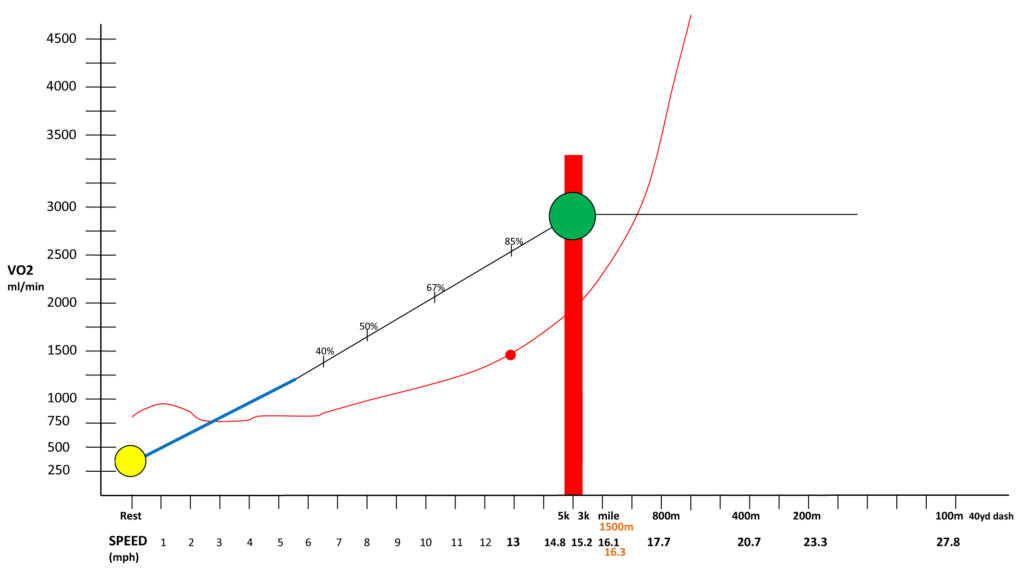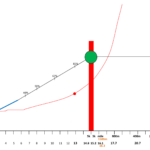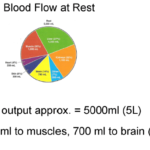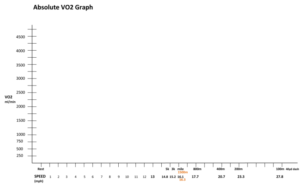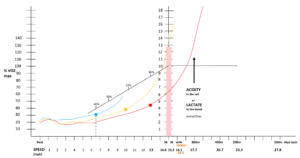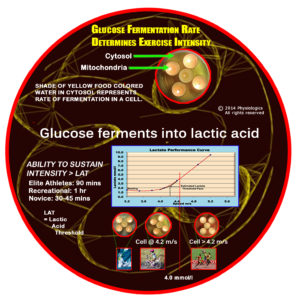The Physical Rules
of Aerobic Metabolism Part II
Week 2. Oxygen Powered Metabolism vs Anaerobic Metabolism
Oxygen powered metabolism means the same thing as aerobic metabolism.
VO2 Max in Context of Speed and Power
This lecture explores aerobic metabolism and performance first from two unconventional perspectives and then from the conventional perspective.
The conventional perspective focus primarily on the VO2 or Volume of Oxygen consumed during exercise. Almost always, these explanations include details like how many ATP’s get made vs anaerobic metabolism and myriad minutiae that get in the way of providing a clear picture of how food breaks down to power the body.
The first unconventional perspective What Aerobic Metabolism is Not shows exactly what type of performances and exercises cannot be powered by aerobic metabolism. This perspective in turn points to why maintaining high-powered aerobic metabolism may damage your heart and coronary arteries, which we’ll touch on but explore in depth later.
The second unconventional perspective focuses on what I call the stillness of aerobic metabolism. This focuses on how the body works while doing seemingly nothing.
The ‘stillness’ perspective opens the door into advanced perceptions – through the eyes of original discoveries to the present day’s comprehension of why Alzheimer’s disease and cognitive decline are reversible.
- Stemming from last week’s lecture, the stillness perspective showed how metabolism is just a slow form of combusting fuel as follows:
Unconventional Perspective 1a: What Aerobic Metabolism is not.
“Oxygen powered metabolism” pushed to the max begins to top off in the world’s fastest and ‘fittest’ athletes at a speeds running near 13 mph in a marathon – and then maxes out around 15 mph in the 5k and 3k races – as shown in the combined lactate and VO2 graph below.
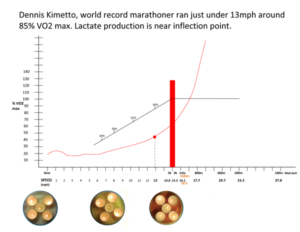
Accelerating past 15 mph, extreme anaerobic glycolysis powers the body (as lactate increases exponentially) toward sprinting speeds reached by track athletes – up to Usain Bolt’s world record 27.8mph
Clarifying what Aerobic Metabolism is not:
Oxygen powered metabolism never produces explosive power; it cannot make muscles contract with great force or speed in any type of exercise and thus cannot boost speeds past 15 mph.
The hard line is: Oxygen based power in muscle cells cannot boost speeds past 15 mph. This tells us aerobic metabolism is a ‘weaker’ form of metabolism relative to anaerobic metabolism.
Unconventional Perspective 1b: The ‘Unhealthy’ Negatives of Maintaining High Intensity Aerobic Exercise
This perspective is covered in a different lecture. I allude to it now to plant a seed and make the concept familiar.
Unconventional Perspective 2: Graphing Oxygen Powered Metabolism at Zero MPH (resting VO2)
Resting humans consume on average, approximately 1/3 liter of O2 per minute – as indicated by the yellow dot on the VO2 graph below.
Note: 1 minute is the standard amount of time used to quantify a measurement of VO2 consumed.
Keep in mind, even though speed is zero – power production or aerobic metabolism in cells is active – your body is still working and consuming oxygen at rest – akin to an ‘engine at idle’ in a car.
Fuel + VO2 –> VCO2 + H2O + heat.
Key Points of VO2 in a Resting Human
- The volume of O2 used per minute by a human at rest would fill a balloon approximately the size of an orange, which is 1/3 liter. 1/3 liter = 333ml.
- At rest, VO2 per minute is called 1 MET for 1 metabolic equivalent, which = 1/3 liter.
- 1 MET is a human’s form of ‘idling’ – akin to an idling car engine using fuel and oxygen at its low point of consumption.
- Every human’s ‘idle’ point consumes either a bit more or less than 1/3L O2. This means 1 MET for all people – or their basal metabolic rate – is unique – but always fairly close to 1/3L O2 consumed per minute.
Conventional Perspective 2: Oxygen Powered Metabolism during exercise and up to VO2 max… at 15MPH
Only muscle cells dramatically consume more oxygen over their resting values compared to other cells. As shown in the graph below your whole body’s VO2 increases progressively – from the yellow to green dot – as speed increases.
- VO2 in humans rises from 333 ml at rest to nearly 3000 ml per minute running 15mph. At this point, humans do not use aerobic power or utilize more oxygen to produce more powerful muscle contractions. Only anaerobic metabolism speeds the body up past this point, which is why the acid levels increase exponentially in the cell.
Comparing a horse to a human, we see speed and oxygen consumption increase similarly and the exact same leveling off – where aerobic metabolism provides no additional boost to speed.
In each case, VO2 max is the where the graph levels off and anaerobic glycolysis takes over to boost speed.
Any speed below 100% VO2 max (15mph) translates to running at a fraction of it.
- See how running 7.5 mph is at 50% VO2 max.
- 85% VO2 max occurs running 13 mph marked by the red dot, which is the pace ran by World Record holder Dennis Kimetto. Notice this pace is near his lactate threshold just before acid levels spike up exponentially if he increased speed.
- All speeds close to but still below VO2 max are way past lactate threshold for all humans, even elite athletes, which explains why the world record paces in the 3k and 5k races can’t be sustained or ran in significantly shorter times.
There’s nothing extraordinary about testing and graphing VO2 in animals. Gradually increase running speed. Record oxygen consumption until it peaks and no longer rises (heart rate also maxes out). As you’ve seen speed may still increase, but at this point exhaustion has set in and you will feel taxed. The test stops here. You’ll see all the details next week when we do it in a lab.
Summary of what VO2 max is and is not:
When aerobic power reaches its maximum – it cannot boost speed or power past 15mph. (running)
Humans can almost double their speed over the speed where VO2 max occurs! (15 to 27.8 mph)
Only anaerobic power – specifically extreme glycolysis – boosts speed past VO2 max speed.
Increasing speed from idle – 1 MET – progressively consumes more fuel and oxygen at a fairly linear rate. (as opposed to the exponential increase with acid production).
In the world record 3k and 5k runners VO2max occurs around 15 mph – which can be sustained for only around 7.5 minutes. The men’s 3k world record is 7:20.67 set by Daniel Komen of Kenya, in 1996. Running this fast is stressful on the heart – for a short time – because its stroke volume stretches out the left ventricle and arteries severely.
Severity of stress on cells, muscles, blood, the heart and its arteries ranges from ‘low to high’ – remaining high when sustaining speeds from 10 to 13 mph for endurance trained athletes, and at slower speeds for non-elite human.
Keep in mind, performing for short periods near maximum aerobic output – the maximum stress zone when running the 3k and 5k – is not necessarily harmful. It is sustaining it at slightly slower speeds over time that creates the damage especially in competitive ‘athletic’ people. The price for obtaining an ‘edge’ to run farther and faster may come at the expense of health.
Overall, a combination of acute and chronic overtraining any muscle, including the heart and its coronary arteries prevents recovery to cells and tissues by training at speeds too high and too frequently over far distances.
Advancing Thoughts
Muscle’s demand for producing power is evident by the 500% increase of blood flow over their resting levels at their maximum VO2 produced power, which maxes out at 15 mph in the world’s fastest runners.
Going forward, do not forget the heart is under great strain performing running competitively. It stretches dramatically as it’s forced to expand – by filling up with up to 2x the amount of blood in order to sustain high aerobic speeds – maximized over time in the 1/2 marathon to marathon distances and maximized at the peak of the aerobic-max-stress point in the 3k and 5k races.
Additionally to the stress/strain on heart muscle tissue and arteries – cellular level fatigue leads to permanently energetic depletion of cells of the heart – resulting in mitochondrial damage, swollen/inflamed cells – beyond the damage mentioned by O’Keefe et al. in Run For Your Life. (Examined by other researchers)
I am purposely conditioning you to come to realize excessive endurance exercise can seriously damage your heart, arteries, and blood – besides your knees and feet.
Real World Graphing of VO2 – in MPH from Walking to Sprinting
ASSIGNMENT: Graph these figures above on the graph below:
Note: 1 minute is the standard amount of time used to quantify a measurement.
- A person’s VO2 at rest may be 333ml/min.
- VO2 at moderate intensity could actually be 1500 ml/min
- Max VO2 could actually be 3300 ml/min, which occurs at moderately high intensity – well before reaching very high intensity.
Comparing Other People to the World Record Marathon Runner, Dennis Kimetto
Red line/dot: Dennis Kimetto, World Champion Marathoner runs 26.4 miles averaging just under 13mph. The red dot shows where Dennis Kimetto’s ‘race pace’ acid levels are before rising exponentially – just under 13mph at 85% VO2 max.
Blue line/dot: An ‘out of shape’ person’s threshold pace is at 6.5mph or 40%VO2 max – with acid levels shifting exponentially ‘sooner’ at lower speeds.
Gold line/dot: A fit person reaches race pace or lactate threshold occurs at 10mph or 65% VO2 max.

